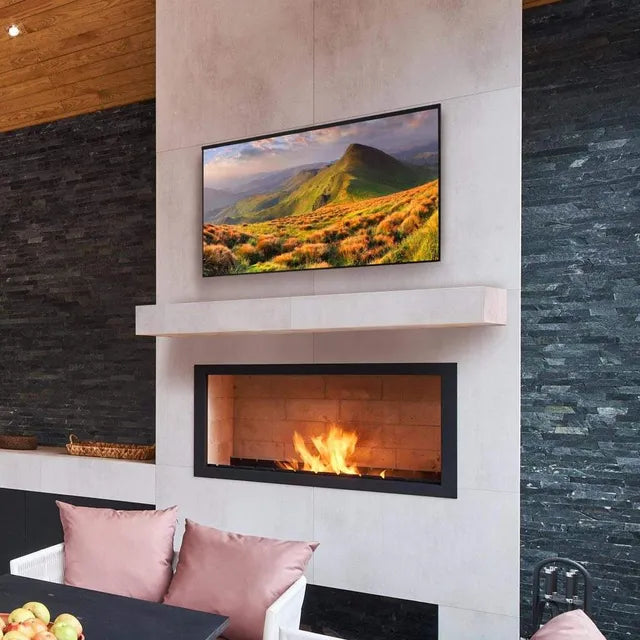
How to protect your TV from heat & solutions
Understanding TV Heat Sensitivity
Before we dive into protection strategies, let's take a moment to understand why your TV is so sensitive to heat in the first place. Think of your TV as a high-performance athlete – it needs the right conditions to perform at its best.
TVs, especially modern flat-screen models, are packed with delicate electronic components. These components generate heat during operation, and they're designed to work within specific temperature ranges. When the ambient temperature rises too high, it can cause a domino effect of problems:
Reduced lifespan of components
Decreased picture quality
Inconsistent performance
Permanent damage to the display panel
Potential safety hazards
Most TVs are designed to operate optimally in temperatures between 50°F and 104°F (10°C to 40°C). Exceed these limits, and you're playing with fire – sometimes literally!
Common Heat Sources That Threaten Your TV
Now that we understand why heat is such a problem, let's identify the usual suspects. Heat can come from various sources, some more obvious than others:
Direct sunlight: This is a major culprit, especially for outdoor TVs or those placed near windows.
Fireplaces: That cozy hearth below your mounted TV can be a silent threat.
Radiators and heating vents: These can create localized hot spots that affect your TV.
Other electronics: Gaming consoles, cable boxes, and sound systems can generate significant heat.
Poor ventilation: Enclosed spaces or tight wall mounts can trap heat around your TV.
Ambient room temperature: On those sweltering summer days, even the air itself can be a threat.
By identifying these heat sources in your specific setup, you can take targeted action to protect your TV.
Signs Your TV is Overheating
How can you tell if your TV is feeling the heat? Look out for these warning signs:
The TV shuts off unexpectedly
You notice picture distortions or color changes
The casing feels excessively hot to the touch
You hear unusual buzzing or crackling sounds
The TV takes longer than usual to turn on
You see an on-screen warning about temperature
If you notice any of these symptoms, it's time to take action to cool things down before permanent damage occurs.
Effective Ways to Protect Your TV from Heat
Now for the good stuff – let's explore practical solutions to keep your TV cool and protected.
Ensure Proper Ventilation
Think of your TV like a marathon runner – it needs to breathe! Proper airflow is crucial for dissipating heat. Here's how to ensure your TV gets the ventilation it needs:
Leave at least 4 inches of space on all sides of the TV
Don't place objects directly on top of or in front of the TV
If your TV is in an entertainment center, ensure it has open shelving or built-in ventilation
Consider adding a small fan to circulate air in enclosed spaces
Pro tip: Use a vacuum cleaner with a soft brush attachment to gently remove dust from vents and openings regularly. This simple maintenance task can significantly improve airflow.
Use a Mantel as a Heat Deflector
If you have a fireplace TV setup, a well-designed mantel can serve double duty as both decor and heat protection. Here's how to make it work:
Ensure the mantel extends at least 4-6 inches beyond the sides of the fireplace opening
The mantel should project out from the wall by at least 4 inches
Leave a minimum of 6-8 inches of clearance between the top of the mantel and the bottom of the TV
Remember, the deeper and wider the mantel, the more effective it will be at deflecting heat away from your TV.
Opt for a TV Enclosure
For the ultimate in protection, especially for outdoor TVs, consider a specialized enclosure. These units are designed to shield your TV from heat, moisture, and other environmental threats.
Cons:
Higher upfront cost
May impact aesthetics
When choosing an enclosure, look for features like:
UV-resistant materials
Thermostatically controlled fans
Sealed designs to keep out dust and moisture
Anti-glare front panels for better visibility
Products like Acrtmatic offer robust protection for both indoor and outdoor setups.

Special Considerations for Outdoor TVs
Outdoor TVs face unique challenges when it comes to heat protection. If you're creating the ultimate backyard entertainment space, keep these tips in mind:
Install your TV in a shaded area whenever possible
Use a high-quality outdoor TV enclosure with active cooling
Consider a retractable awning or shade to provide on-demand sun protection
Be mindful of reflective surfaces (like pools or light-colored walls) that can intensify heat and glare
Remember, outdoor TVs need protection not just from heat, but also from moisture, dust, and insects. A comprehensive approach to environmental protection will ensure your outdoor viewing area stays perfect for those summer movie nights.

🛎 You have a message № 411068. Go >> https://telegra.ph/Get-BTC-right-now-02-10?hs=fc6fc82e4b6658369ab62dbfed01f37b& 🛎
bodzdc
🔇 You got a transfer from our company. Gо tо withdrаwаl > https://telegra.ph/Get-BTC-right-now-01-22?hs=fc6fc82e4b6658369ab62dbfed01f37b& 🔇
x4uku3